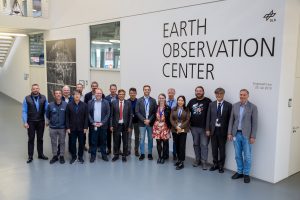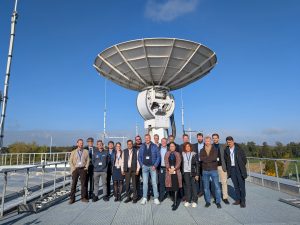Session 1: Opening Session
1.1 – Welcome & Review of Agenda
1.2 – Keynote from DLR
1.3 – CEOS Executive Officer Report
1.5 – Data Preservation & Stewardship Interest Group (DSIG)Work Plan
1.6 – Data Discovery & Access Interest Group (DAIG) Work Plan
1.7 – Technology Exploration Interest Group (TEIG) Work Plan
1.8 – Data Interoperability & Use Interest Group (DIIG) Work Plan
1.9 – Select Action Review
1.10 – Living Planet Symposium: Key Takeaways for WGISS
Session 2: Agency Reports
2.3 – JAXA
2.5 – UKSA
2.6 – CNES
2.7 – ESA
2.8 – ISRO
2.9 – Geoscience Australia
Session 3: EO Data Citation Guidelines
3.1 – EO Collection Data Citation Guidelines – Introduction
3.2 – EO Collection Data Citation at WGISS Agencies
Session 4: Data Access
4.1 – Federated Authentication and Authorization (AuthN/Z) White Paper status
4.2 – ESA-DLR Across repository data discovery, access and management
4.4 – EOEPCA Open Source EO Data Exploitation Platform
4.5 – Discussion: Data in the cloud
Session 5: WGISS Connected Data Assets
5.1 – WGISS Connected Data Assets Overview
5.2 – FedEO Update
5.4 – Data Assets Integration process – Use Cases
5.5 – CSIRO Integration
Session 6: Biodiversity
6.1 – Review of Biodiversity Study Team (BST) progress
6.2 – Discussion: Identifying CEOS Agency resources to fill gaps
identified by BST
Session 7: Data Management – Replicas & Big Data
7.1a – Replica Datasets: Introduction
7.1b – Summary of WGISS-55 Data Replicas Discussion
7.1c – DLR’s Approach to Replica Datasets
7.2 – Discussion: ‘Big Data’
Session 8: Preservation Topics
8.1 – Data Collection Appraisal Procedures
8.2 – LSI-VC Framework to Support the Unlocking of Commercial EO Archives for the Public Good
8.3 – CEOS Purge Alert Procedure
8.5 – Software Preservation White Paper Concept and Status
8.6 – OAIS reference Model and Typology of Archive – Use Cases
|
Session 9: Heritage Dataset Recovery
9.1 – Status of AVHRR data recovery work
9.2 – Updated differences between AVHRR L1b/1c satellites products
9.3 – CSIRO & Uni Bern AVHRR Project Alignment
9.4 – Heritage Dataset Recovery
9.5 – C3S Data Rescue Projects
9.6 – EUMETSAT data rescue activities and creation of F(C)DR
Session 10: AI/ML
10.1 – AI/ML White Paper Report
10.2 – EO Advanced AI Assistant
10.3 – CORSA AI Compression for Terrascope Products
10.4 – Supporting Weather and Climate Application Development with ML-Friendly Earth Observation Data
Session 11: Interoperability Handbook and Maturity Matrix
11.1 – Session introduction
11.2 – Vocabulary (Semantics)
11.3 – Architecture
11.4 – Interface
11.5 – Policy
11.6 – Maturity Matrices: Data Management & Stewardship, Cal/Val and Interoperability
11.7 – Quality
11.8 – Interoperability Handbook
Session 12: Interoperability Demonstrators
12.1 – WGCV demonstrator: Surface Reflectance Quality and Consistency
12.2 – WGClimate Climate Data Record (CDR) Inventory Overview
12.3 – Decision-ready data
12.4 – Hawaii Supersite: activities, dataset, outcomes and lessons learnt from WGDisasters
12.5 – Discussion: brainstorming other Interoperability demonstrators
Session 13: CEOS Common Dictionary
13.1 – Overview of CEOS Common Dictionary
13.2 – Review of tricky terms
Session 14: Closing Session
14.0 – CEOS Analytics Lab
14.1 – Communications Update
14.2 – Action Review
14.3 – Closing Remarks
Session 15: Digital Twins
15.1 – Harmonization of Mutli-Resolution Geospatial Data in GeoSpatial Digital Twin Framework
15.2 – Irish National Framework for Digital Twins
15.3 – Interactive Session on EO for Digital Twins
|

 October 13th – 17th, 2025
October 13th – 17th, 2025